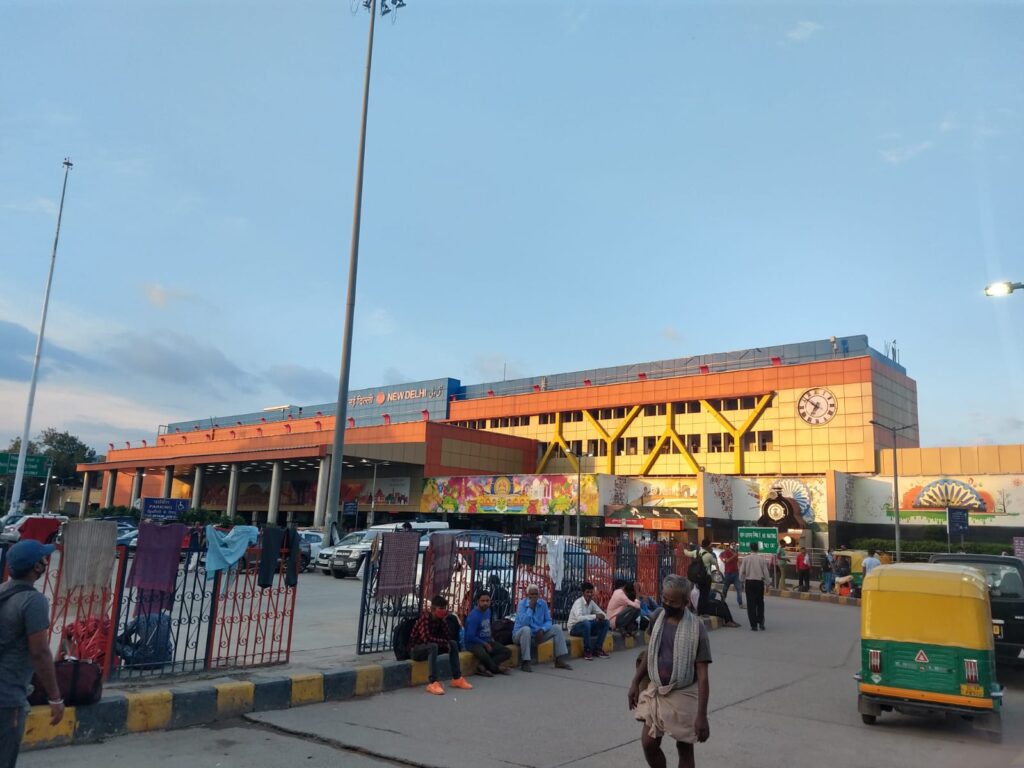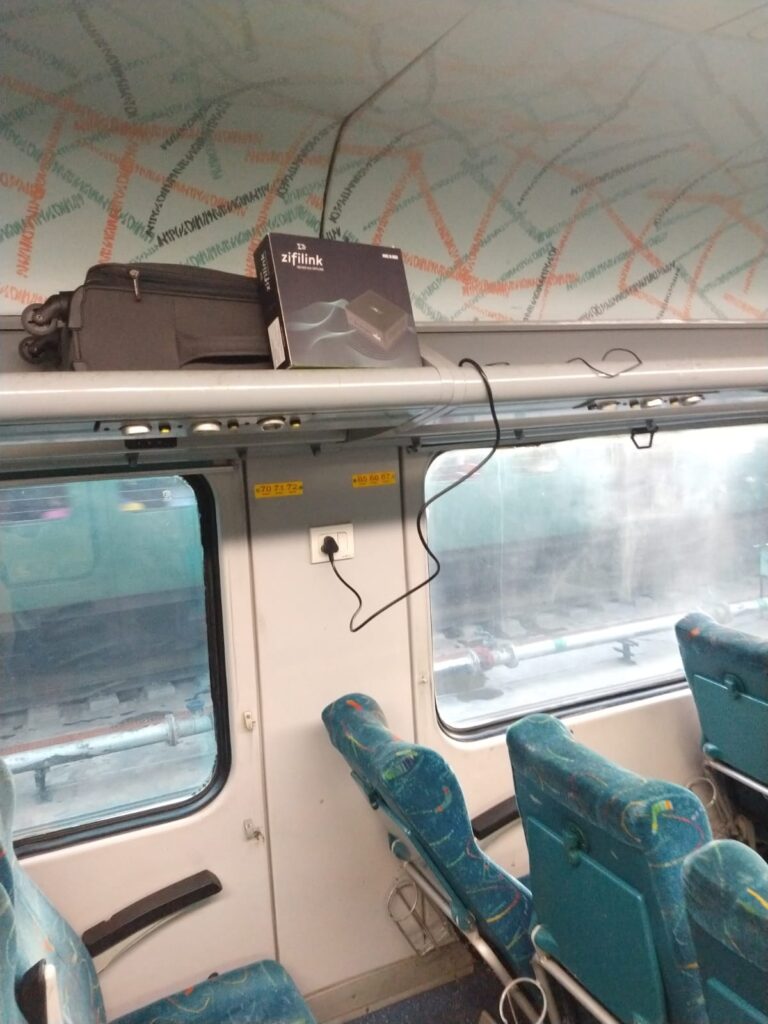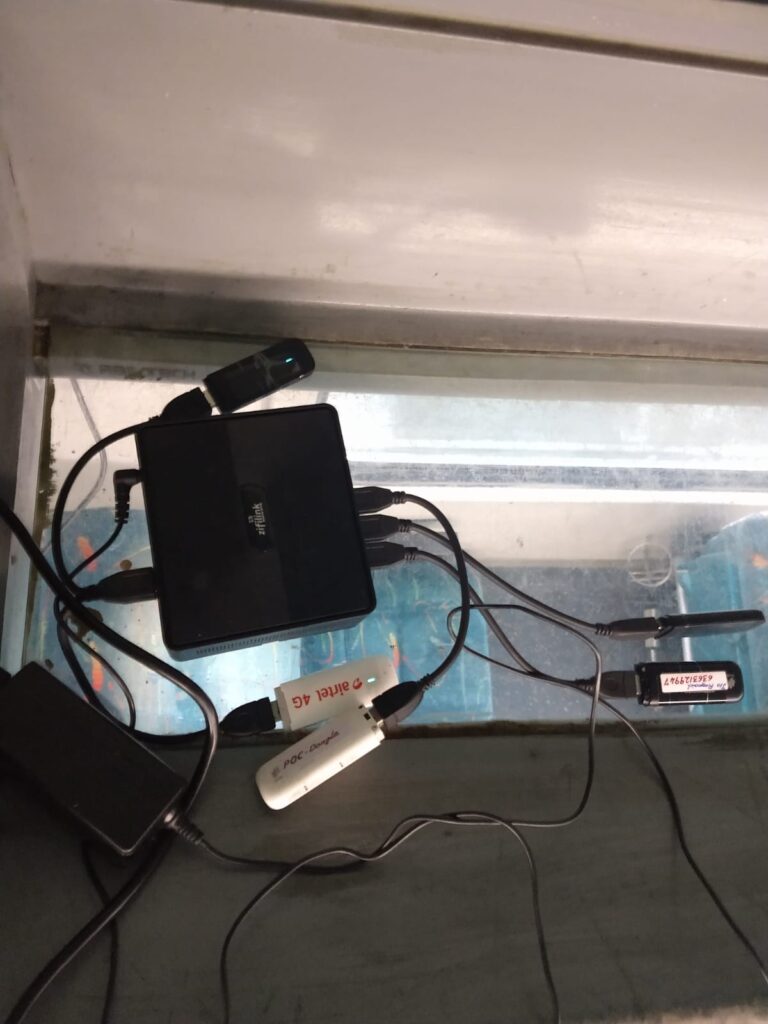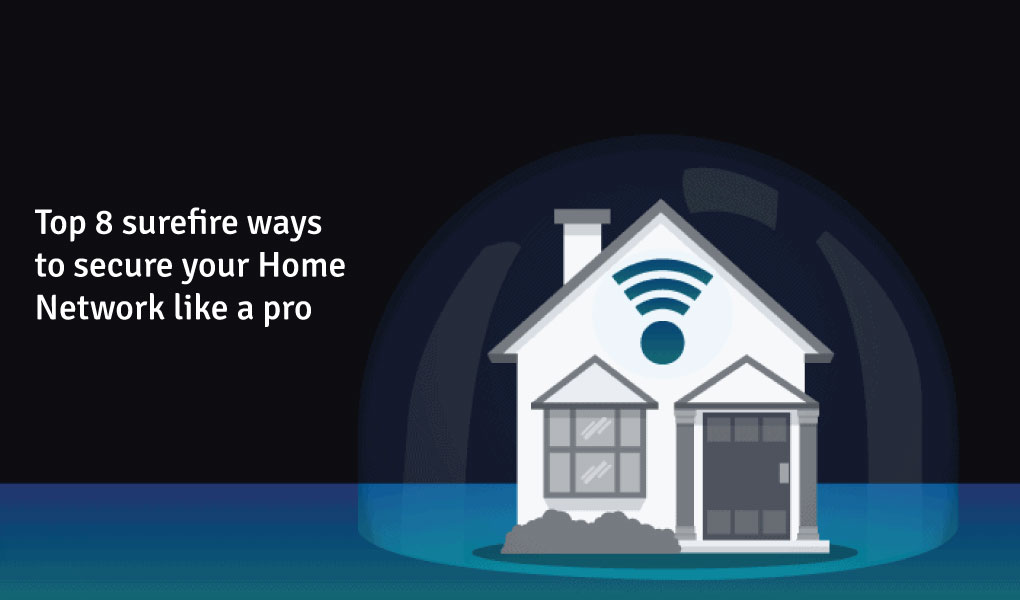Summary: The following article is a real life experience of the Zifilink team evaluating the Zifilink 5X product on a running train as a response to the NEWS in which Indian Railways dropped the plan to provide internet connectivity in trains. This methodology would reduce the cost by a factor of more than 1/5th which will make broadband internet connectivity in Indian trains a reality.
The NEWS
In the October of 2019, the railway minister then, Mr. Piyush Goyal announced that the Indian government is planning to provide Wi-Fi service in Indian trains in the coming four-and-a-half years. Fast forward to August of 2021, the present Railway minister Mr. Ashwini Vaishnaw who also holds the Communications and Electronics & Information Technology of India portfolios, since 7th July 2021,said the government has “dropped” the project stating that it was not cost-effective.
In a written reply to a question in the Lok Sabha, Mr. Ashwini Vaishnaw said as a pilot project, Wi-Fi based internet facility was provided in the Howrah Rajdhani Express train through satellite communication technology.
“This technology was capital intensive with recurring costs in the form of bandwidth charges and thus, was not cost effective. Also, the internet bandwidth availability to passengers was inadequate.
“Hence, the project was dropped. At present, suitable cost-effective technology for provision of Wi-Fi based internet services in trains is not available,” he said.
Ground work
As someone who loves to travel in train for work and otherwise, I did not feel great about the news and decided to do some reading on the topic. I came across an interesting research paper which was dated September 2007 published in The Journal of The Institute of Telecommunications Professionals which explored the business model for broadband internet on trains. Though the demographic background of the research was the railway network in Belgium and the time of research, 14 years ago, there are many learnings which can be directly applied to the Indian scenario.
For Example its true that the network requirement for best effort services like web browsing and e-mail would be less stringent on the latency and continuous bandwidth availability in comparison to video calling which needs low latency continuous bandwidth availability to deliver a good user experience. Similarly, it’s still true that the needs of a short distance commuter will most likely differ from those of a passenger on a long-distance train. While the former may be more interested in relatively lower bandwidth consuming services the long-distance traveler would be more interested in higher bandwidth consuming multimedia content.
The key success factor in offering Internet on the train is that the user is certain about the availability and predictability of the service.
There is a big difference in solutions considered as the year 2007 was the pre-LTE era and in Belgium 3G was just getting rolled out in some of the densely populated areas. However, it is interesting to note that the conclusion was not to depend on any one technology but to use a combination of multiple technologies to provide the best user experience to achieve the best NPV for the service.
Technology Exploration
On doing a little more search on the internet I found this article which talked about how the internet will improve the passenger experience on Indian trains. Being convinced of the potential of opportunity, it was time to explore possible technologies which could be put to use. Modifying the search now to find potential technologies that could be used, surfaced Trackside train to ground technology, but using that would mean front loaded investment in terms of installations which could make it capital intensive. On looking further, I stumbled upon a case study by Teldat which uses the existing 4G network to aggregate 4 such networks to provide an aggregated throughput to use in moving trains which meant the need for investment was relatively low.
Exploratory journey
The next thing was to test our own home grown solution by name Zifilink to find out if the user experience would meet peoples expectations for speed and reliability on a moving train. It was now time to leave the comfort of my office and hit the tracks to do some real field testing. The following week, we had an opportunity to travel from New Delhi to Chandigarh on the Shatabdi special train which covered about 250KMs. Armed with the knowledge that 4G aggregation is a practical method which is used world over to achieve the kind of results, we packed a Zifilink 5X along with 5 different dongles and got on the train to test the real-world experience of using bandwidth aggregation to have a broadband internet connectivity on the train.
We reached NDLS at around 7 in the evening and the station wore a majestic look with the setting sun’s light.

New Delhi railway station in the evening sunlight
We had just enough time to get some water bottle and setup the Zifilink with power and dongles on the luggage rack above the seat before the train left the station at 7.15 PM.

Zifilink 5X setup in Train for Internet access
Since there were only 3 other people in the coach, there was enough free space for us to setup the device and test also the Wi-Fi range within the coach.

Zifilink 5X with 5 dongles on Shatabdi special train
Initially we started with lite loads like email and social media messages which did not need a steady and high bandwidth connection. We then wanted to explore experience of a video call and hence used Zoom to do a call with our teammate who was based in Bangalore. The call went on for a little over 30 minutes with no signs of network issues for the whole period of time. As a last test, we also downloaded and later uploaded a file from our FTP site which lasted for about 15 minutes again without any interruptions. We were left with almost 2 hours on the clock and we turned to watching a Netflix show for the lack of a better test we could come up with. When we were left with about 30 minutes on the clock, we found the screen frozen for about 5 minutes and on checking we found that none of the dongles had network availability for about 5 kilometers enroot. As soon as some of the dongles picked up signal the show resumed and went on till we reached Chandigarh Junction which was our final destination. This was our first experience trying to use Zifilink on a moving train and the results provided a very convincing reason for us to propose the same to Indian Railways as a practical method to access broadband internet on the trains.
Conclusion:
From the work undertaken we are convinced that aggregating multiple mobile service provider networks is a great way to provide internet connectivity in Indian trains. However, there is a need to do a study on the network availability on every route that is considered before the service can be rolled out, so that the user experience meets the present-day traveler expectations.



About The Author: Sajith
More posts by Sajith